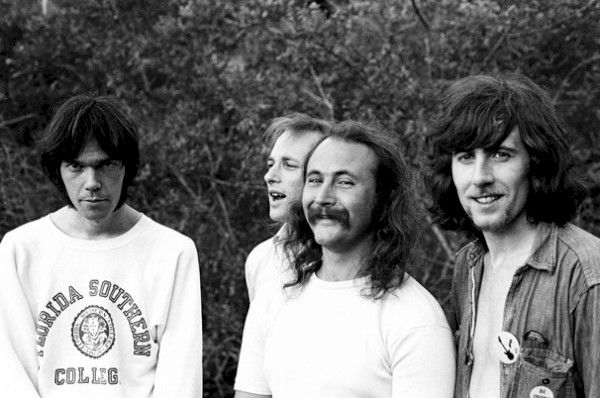Unplug The Jukebox
- Lucy Denning

- Aug 3, 2022
- 4 min read
One of the biggest influences on fashion of the last century has been music. From The Beatles’ hair to Madonna’s fishnets to Robert Smith’s eyeliner, people have been piercing their noses with safety pins, dying their hair and ripping their jeans, fans have wanted to look like their idols for as long as pop culture has been around.
In around the 1960’s to the 1970’s, the youth began to take control over what was considered ‘popular’ and they began to rebel from outdated ideas of what was expected from them previously. This is where there was a clear divide between generations, teenagers and young adults were dressing in unorthodox fashion and listening to new artists of the time, who were playing styles of music that were unheard of. An example of this is The Beatles, the innovators of so many different styles of music – for example dance rock, backward masking and automatic double tracking – this change in the music scene created a change in how their fans dressed. Young men in the late 1950’s to the early 1960’s began styling and cutting their hair like The Beatles, this symbolized not only the fact that they were a fan of their music but also that they were stepping away from the traditions and expectations of older generations. The older generations were not happy, as this was something new and different.
Also happening in the late 1960’s to the early 1970’s was hippie fashion. ‘Hippies’ would dress in old clothing, have long hair, the men would have long beards too and according to historian Graham Nash, one of the first signs that gave away that somebody was a Hippie was if they had long hair, Nash spoke on this is 1991 “If you saw a man with long hair you knew instantly the social and political standpoint, you knew how they thought and what their values were”. Much like The Beatles haircut, hippie fashion was as much as social statement as it was a political statement Hippies were trying to chnage the American system, challenge societal norms of the time and spread peace and love. Hippie fashion stems greatly from the artists of that generation, artists who shared the values and beliefs of the hippies such as Janis Joplin, Jimmy Hendrix, John Lennon and Jim Morrison. These artists would not have realized the long-lasting trends that they were creating, both fashion trends and moral trends, even in today’s society, people still draw inspiration from these artists for their fashion and what that outfit represents.

Other fashion and music subcultures of the 1970’s were disco and punk. Again, it was easy to tell someone’s beliefs and tastes due to what they were wearing. The origins of disco evolved from African-American gospel music mixed with jazz and R&B. In the early days of disco, late 1960’s to the early 1970’s, it was a subculture that was quite important to the gay community, so more often than not if your fashion and your style was disco then you were associated with or part of the gay community. This is due to gay nightlife of the time primarily being bars with disco music, as well as movies such as Saturday Night Fever and bands such as The Village People. Although Saturday Night Fever was not necessarily a ‘gay film’ it challenged the audience’s ideas of masculinity and eased the restrictions on what men could wear in the 1970’s - It gave them an avenue to express themselves.
Punk is almost more of a political statement than it is a fashion movement. Punks were as much associated with their views as they were with the music that they listened to, these views were shared with the punk artists of the time. That being said, their fashion was solely based on the artists that they listened to, if Sid Vicious pierced his septum and hated the establishment, a fellow punk would pierce their septum because they too hated the establishment.
In 1969 David bowie burst into the scene, changing both the music and fashion world forever. Bowie continuously burred the line between masculinity and femininity, he was so different
and usually this would scare people away, but they were so intrigued by him that he very
quickly became one of the biggest stars of all time. Bowie widened the horizons for his fans and enabled them to see possibilities that they may not have noticed before, not only with music and fashion, but with everything- he not only broke the boundaries of what people can wear and listen to, he broke the boundaries of what they can wonder. He taught the world to question everything and limit nothing.

In the 1980’s glam rock and hair metal took over the music scene. Bands like Bon Jovi, Poison, Def Leppard, Twisted Sister and many more took over the charts with their booming vocals, massive guitar solos and above all, their image. They wore makeup, styled their hair and donned some outrageous patterns and colours, it was cool because of the space created for this by icons such as Bowie, Prince and Boy George. These new bands were able to build on the foundations that Bowie had made. They and were able to move freely in this space between masculinity and femininity because the space had previously been made. With this, their fans did the same.
By the 1990’s band tees were so in, this became the number one way to support and showcase your favourite bands as well as find your style and identity.










Comments